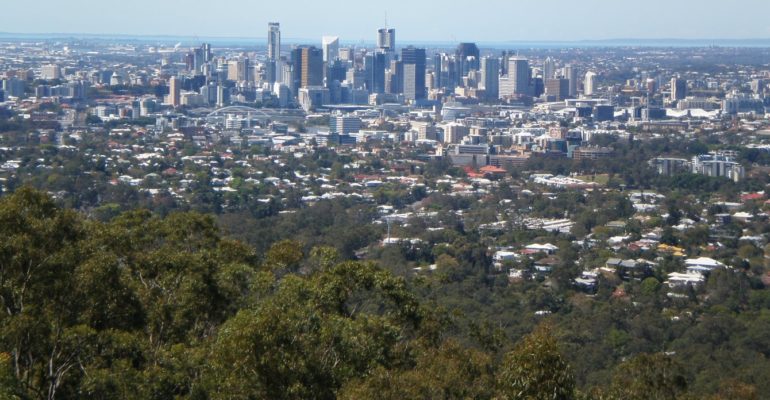
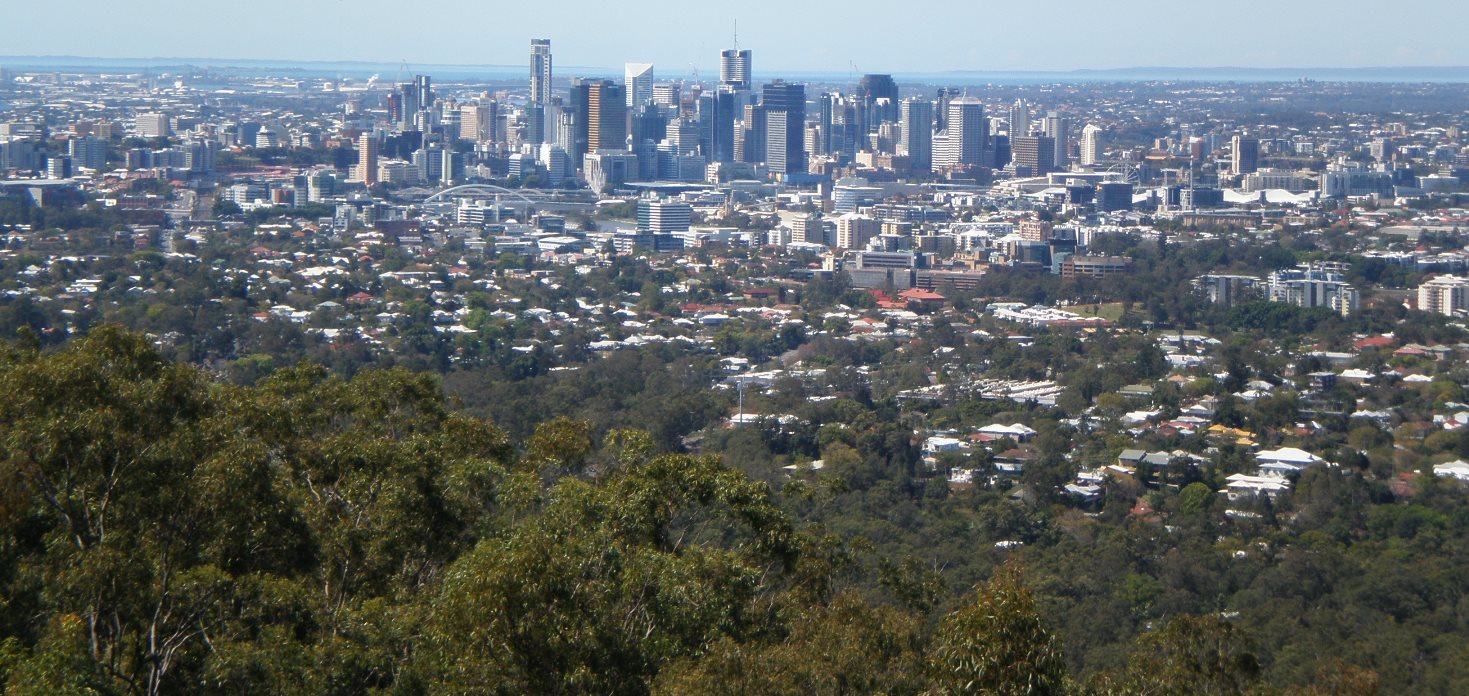
Brisbane viewed from Mt Cootha – continued development of our cities is putting pressure on urban green spaces (Photo)
Greater recognition of the benefits of urban forests is focusing efforts from all levels of government to defend and improve them.
Perhaps the most iconic of these efforts is New York City’s Million Trees Program. Other initiatives of note include the City of Melbourne’s and the City of Sydney’s.
Earlier this year, federal Environment Minister Greg Hunt declared:
Green cities – cities with high levels of trees, foliage and green spaces – provide enormous benefits to their residents.
Hunt pledged to develop:
… decade-by-decade goals out to 2050 for increased overall tree coverage.
But achieving green cities will need more than just canopy cover targets and central city strategies. In contested urban environments, it will require new approaches to urban planning and development.
Urban development and the urban forest
As cities grow, pressure for urban consolidation increases. Planning policies that enable compact city development, along with increased market demand for smaller, well-located dwellings, contribute to this pressure.
Urban consolidation is an important policy goal to improve cities. While not uncontested, consolidation slows cities’ outward expansion. This can reduce the loss of agricultural and ecologically significant land and provide a more efficient urban form.
Yet, as cities become denser and the traditional suburban “house and garden” is redeveloped, buildings are replacing trees. How is it possible to reconcile urban consolidation with urban greening and increased canopy cover?
A critical first step is to measure the urban forest and assess the impact of redevelopment and consolidation on canopy cover. This should inform strategies to best meet compact city goals while enabling a rich and extensive urban forest. This agenda forms part of the work of the National Environmental Science Program’s Clean Air and Urban Landscapes Hub.
A case study of the Melbourne suburb of Williamstown illustrates the potential conflict between consolidation and the urban forest.
The map below brings together tree canopy cover derived from remote sensing with analysis of land use and zoning. It shows tree canopy cover on both private and public land.
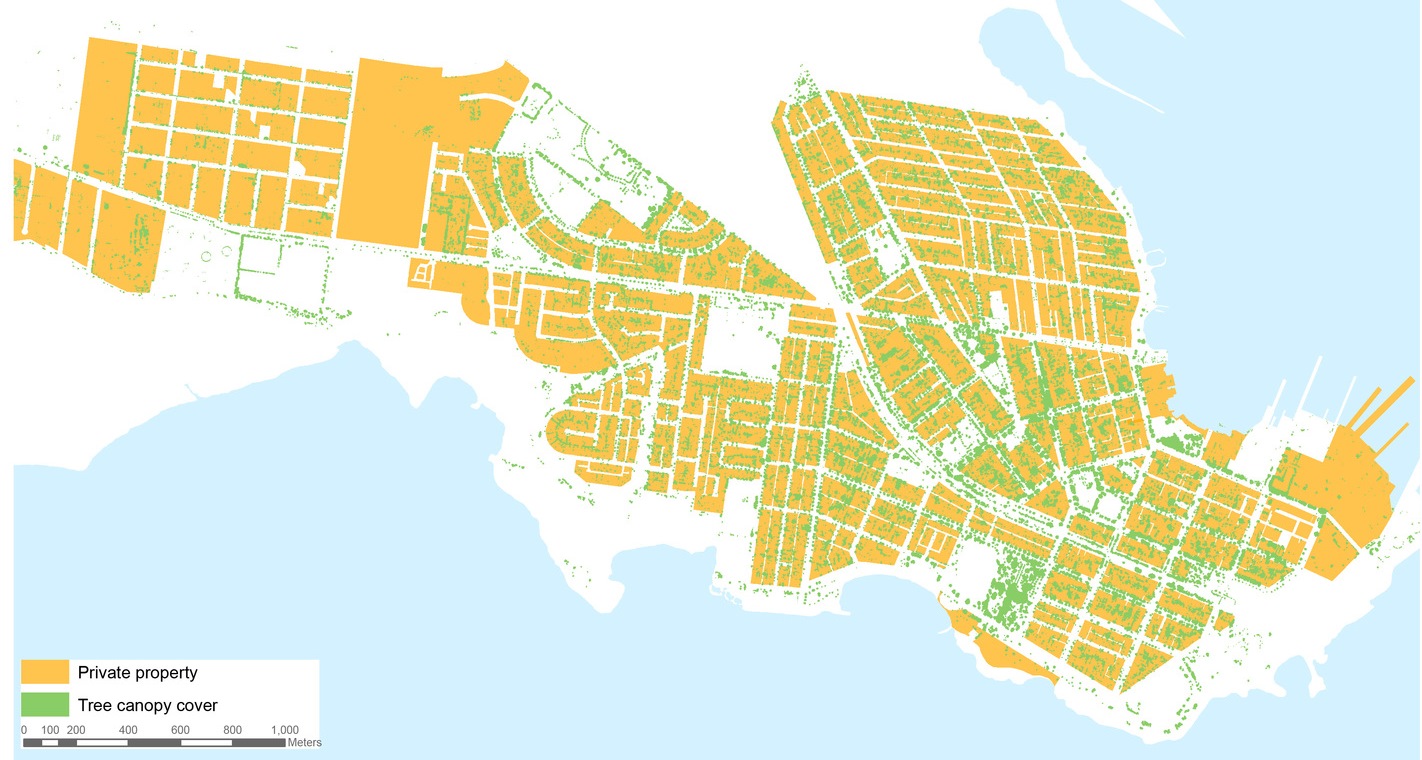
Tree canopy cover and the public/private realm in Williamstown. Author provided
Some 55% of the canopy is over private land. Urban forest policies, which typically focus on the public realm, are at best tackling only half the picture. Urban consolidation policies also rarely note the impact of redevelopment on the urban forest.
Urban deforestation
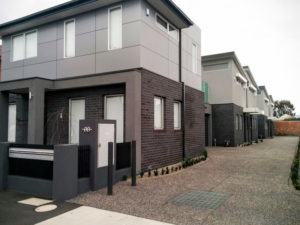
These Preston townhouses are an examples of dispersed, low-yield consolidation. Joe Hurley
Tiny backyards in new fringe areas and boundary-to-boundary development in existing suburbs often eliminate private land’s potential contribution to the urban forest. This puts incredible pressure on the public realm to provide the urban forest.
Current land-use policies support dispersed piecemeal redevelopment of individual lots in existing suburbs, which produces relatively few new homes . At the same time, replacing an existing home with a larger house or with several townhouses typically results in all existing vegetation being stripped from the site.
Meeting future housing needs in this way would require redevelopment of a vast number of these lots. This would have a significant impact on the urban forest.
Higher-density modes of consolidation also typically eliminate vegetation. However, their greater housing contribution means this form of consolidation’s cumulative impact on the urban forest is significantly less than that of low-density redevelopment (as below).
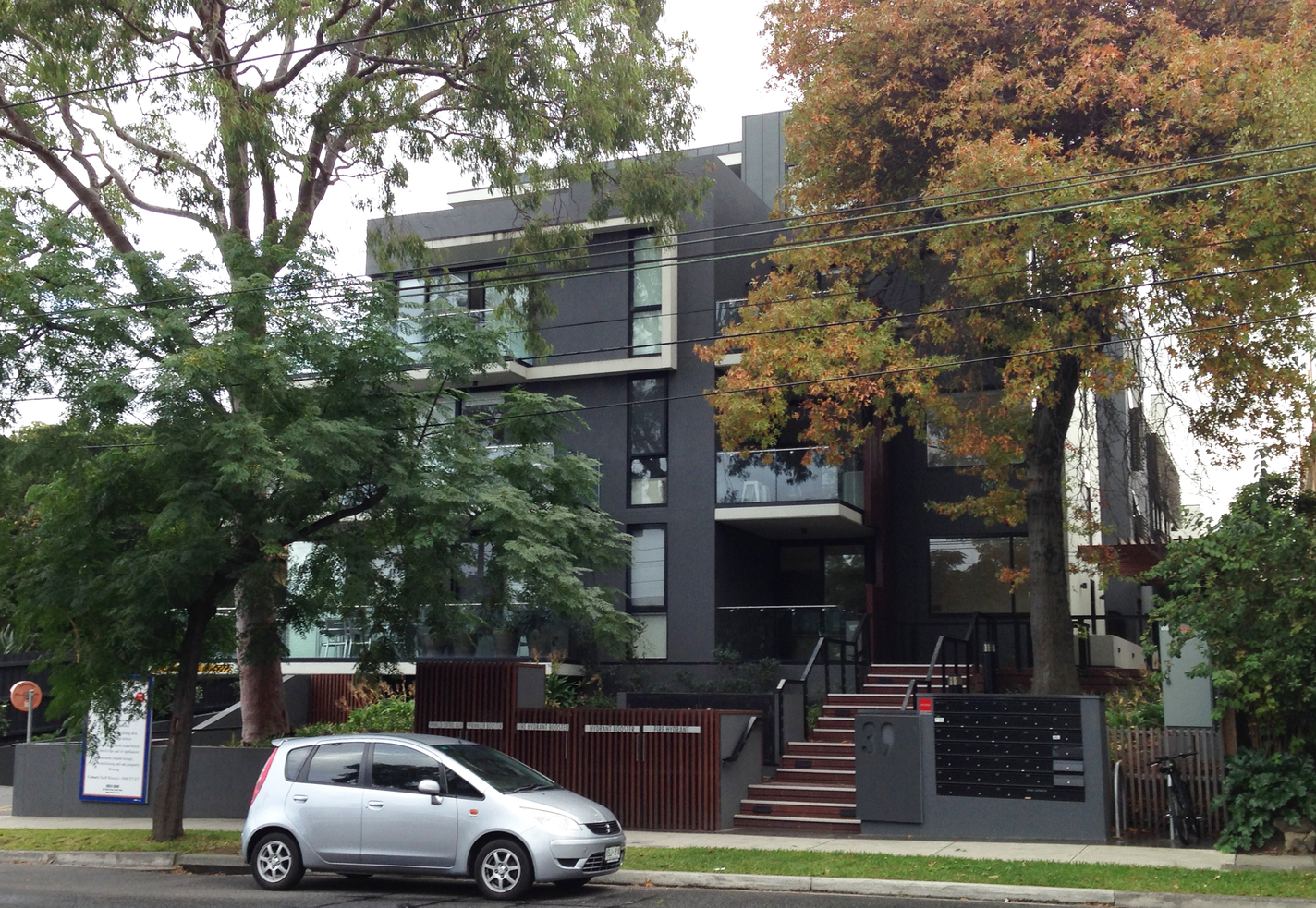
This apartment building in Hawthorn, Victoria, is an example of higher-density consolidation. Kath Phelan
An urban forest, not a concrete jungle
Compact city land-use policies and urban forest policies need to work together to ensure that cities have high-quality built environments and extensive tree cover. These policies must set the overall goals and outline strategies to deliver on them for both public and private land.
Cities urgently need more strategic identification of small and large lots that are suitable for more intensified development, particularly to reduce the need for the widespread low-level consolidation that threatens tree cover.
Land-use regulation should ensure that both low-yield and higher-density redevelopment maintains the contribution of private land to the urban forest. Existing and new approaches to achieving this outcome need to be considered – whether through local rules, government programs or incentive schemes.
An early leader in this space is Brimbank City Council, which has made modest but important planning scheme changes to require trees in the front yards of two-lot subdivisions.
Rapid urban consolidation will change urban landscapes significantly over the next few decades. The right decisions need to be made now to ensure the consolidation of cities maximises the benefits of redevelopment while also protecting one of their most critical functional, cultural and environmental assets.
![]()
Joe Hurley, Senior Lecturer, Sustainability and Urban Planning, RMIT University; Ebadat Parmehr, Research Officer, School of Global, Urban and Social Studies, RMIT University; Kath Phelan, Research Fellow, School of Global, Urban & Social Studies, RMIT University; Marco Amati, Associate Professor of International Planning, Centre for Urban Research, RMIT University, and Stephen Livesley, Senior Lecturer in Urban Biogeochemistry, University of Melbourne
This article was originally published on The Conversation. Read the original article.
Republished by Redlands2030 – 15 April 2016
Please note: Offensive or off-topic comments will be deleted. If offended by any published comment please email thereporter@redlands2030.net
2 Comments
Dave talks about food growing spaces…reminds me of living & working in high rise buildings in Washington D.C. prior to moving to Capalaba near Coolnwynpin Ck. I lived in a 15-storey apt bldg in Chevy Chase, MD surrounded by apt bldgs, with a wide open square in centre… part of which was a park maintained by council. Council provided us high rise apt dwellers remaining land to get our hands dirty growing our own produce, divided into rows we rented for minimal cost. A few rows were ploughed for me, loved coming home from work changing into gardening clothes looking after my vegetable garden while at the same time getting to know other residents.
Friends living in housing estate in Alexandria, VA had, directly opposite, a vast area set aside for residents to plant their own gardens without need to dig up their own back yards with manicured lawns used for entertainment purposes.
Saddened… to see Thornlands former agricultural/farming land buried under concrete…leaving nothing for locals. We need new planners in Council who aren’t solely focused, as they are now, on filling every available space up to roadsides, with brick & tile dwellings which leads to social unrest, illness, whereas green & open space gives people a sense of wellbeing we all have a right to. Grateful…Bne’s Lord Mayor Graham Quirk values local parks, enhances them, providing more as needed. Good news is that an area dedicated to environment has recently opened up in Karawatha Forest where people can learn about conservation, go on hikes, etc. Sadly, we have lost our wildlife corridors in Capalaba & elsewhere where we once saw koalas along Coolnwynpin Creek, platypus in waterway, koalas along creek bank, water birds, all lost to us as developers (one being Peter Endacott) and politicians allowed filling in our once beautiful waterway building tall towering concrete walls along the bank that attracts graffiti artists & social misfits thereby depriving locals of ever being able to set foot again along Crotona Rd creek bank for fear of being mugged or worse. Insatiable greed of the few effectively denies people their right to reside in a liveable environment causing harm and unhappiness driving families away seeing their once beautiful surroundings concreted where people like me can no longer walk their dogs along Crotona Rd Coolnwynpin Ck bank beyond units at number 19 that leads to Capalaba Central. Here you see an ugly tall timber fence while under Cr Gleeson’s watch, with dirty grubby concrete barrier in front of it also depriving locals use of the pathway. Seeing what we have, and seeing what people have on Lakeside Victoria Point makes me weep.
Would it be such a big leap to have developers of town house and apartment developments set aside a food growing space for their owners/tenants in a common area? Could this not be made a local government stipulation?